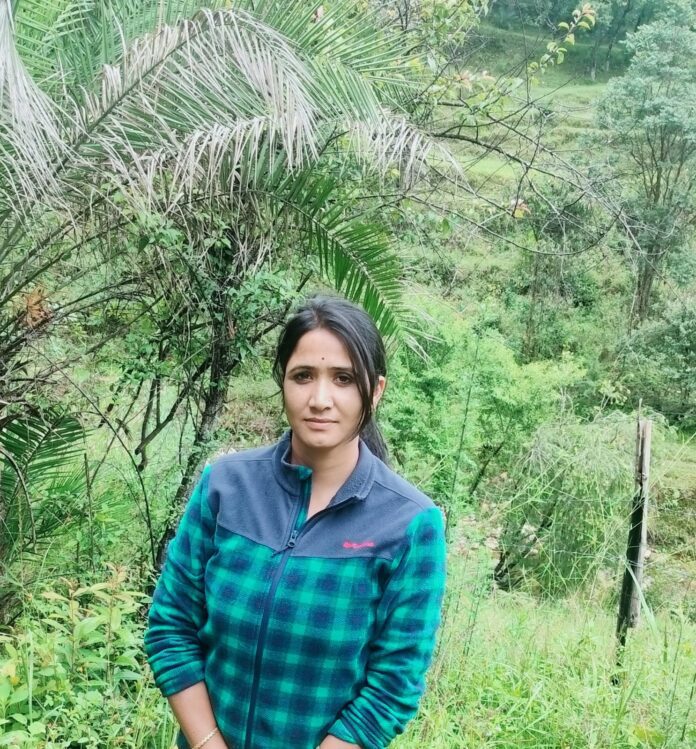Palampur woman tills a success story with her precision vertical farming, turns a guiding light for Himachal agriculturists battling penury

The Newz Radar
MANDI: Bharti Bhoria of Dhoran village in Palampur sub-division of Kangra district in Himachal Pradesh is a young creative and innovative agricultural entrepreneur who has earned much fame by adopting precision vertical farming, a field on which she has been working as a research scholar for long.
She has set up her own farm with the support of her family and the Department of Horticulture where she is producing cucumber, parsley, basil, stevia, strawberries, lettuce, capsicum, broccoli, brinjals, tomatoes, cabbage and rosemary. In the last couple of years of its inception, she has taken the concept of vertical farming to a new level in Kangra district.
The produce from the farm is sold in local market through retail using social media applications. The produce from all crops fetches her Rs 1.5 lakh per month. The entrepreneur is also doing research on growing sea buckthorn and blue berries through vertical farming techniques so that these could be cultivated in this area. She has been training farmers, self-help groups, agriculturists, horticulturists and people interested in smart agriculture techniques across Himachal Pradesh other than delivering lecturers to encourage them to get evolved in cultivation of high-value crops in their available fields and spaces.
Bharti did her bachelors from Chaudhary Sarwan Kumar Krishi Vishwavidyalaya at Palampur and masters from the Central University of Himachal Pradesh in environmental sciences. She has rendered her services as ABM in Senior Secondary School, Thakurdwara; as Research Assistant at CSIR, Palampur, and as consultant, Waste Management Project in the Municipal Corporation of Kangra.
Talking to TNR, Bharti said that while pursuing her doctorate, she got the idea of precision vertical farming. She was doing a research project for the National Institute of Technical Teachers Training and Research (NITTTR), Chandigarh, and later she started her research on small vertical farming setups and cost comparison.
“What I found out was that vertical farming can reduce labour, land, water and resource requirement tremendously and we can efficiently use our resources to produce more crops per unit area. With the support of my husband Rajeev Bhoria, I decided to set up the farm for growing vegetables and fruit plants through vertical farming. The research and planning continued as we gained success in our efforts,” she said.
In 2021, she said, they planned to grow vegetables and fruits commercially and transformed their farm into a commercial setup by investing around Rs 90 lakh in 2022. “In the very first season, we earned around Rs 15 lakh in 10 months. The Himachal Department of Horticulture has helped us in every step of the project. The outer greenhouse is sponsored by the department, which also provided us valuable input at every step,” she said.
Bharti said they were trying to build a front-end sales system that can deliver fresh vegetables and fruits to consumers directly from the farm. “This will encourage farmers and improve their income. Many farmers are already associated with us and are working in this field. We are also building small IOT controlled setups to automate farming process, which other farmers can also use,” she opined.
“Every month, we earn around Rs 1.5 lakh from all the crops, most of which we are investing in the expansion of farmland and to pay the salaries of the nine workers associated with us. We have a target of developing our village and surrounding areas as a fruit hub of strawberry, blueberry and sea buckthorn in the coming five years. We expect the Department of Horticulture and the government of Himachal Pradesh will provide us with support and encouragement so that we are able to achieve our targets,” explained the emerging entrepreneur.
Vertical farming is an innovative method of growing crops and plants by stacking these on vertical multi-level racks inside a controlled-environment structures. Each rack has space above that allows vegetation to grow upwards. These high-tech farms drastically reduce the space needed to grow crops as they can be housed in warehouses, industrial buildings or even skyscrapers rather than using farmland or traditional greenhouses. The ability to install vertical farms close to consumers in urban areas reduces the costs of transportation, storage and handling of foods. Smart growth systems and LED lighting provide the crops with all the necessary nutrients no matter the season, so farmers can grow fresh greens all year round.
Vertical farms are fully controlled indoor environments based on controlled-environment agriculture (CEA) technology. This ensures that the crops grow in a perfect microclimate, enabling high yields throughout the year. The harvest cycles are much faster than in traditional agriculture, and the yield is predictable. The CEA excludes uncertainties like flood or drought, which are impossible to predict in outdoor agriculture.




